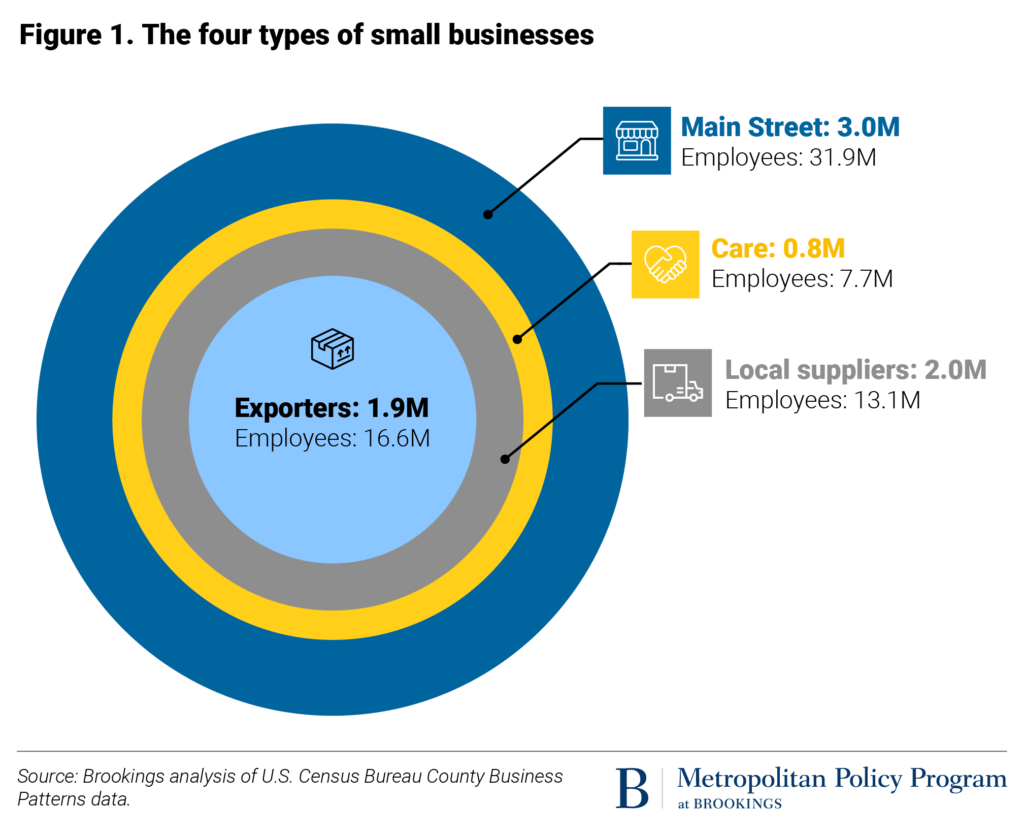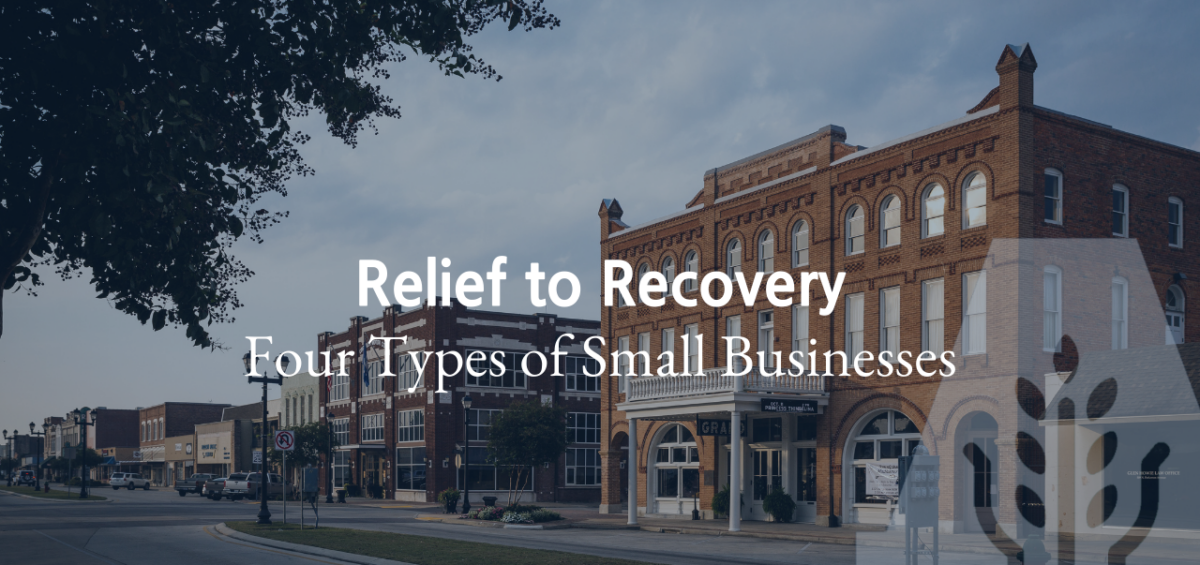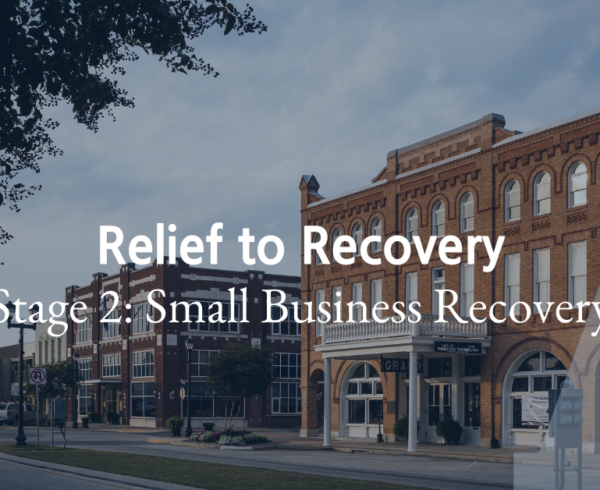This post is part of a five-part series called Relief to Recovery, an analysis done by Joseph Parilla and Sifan Liu of Brookings Institute.
“Small business” is an unhelpfully broad segment. This brief focuses on small businesses with fewer than 100 employees, with the acknowledgement that smaller businesses have experienced particular challenges during the economic crisis.
Collectively, small businesses with fewer than 100 employees constitute 97% of all businesses and account for 49% of U.S. employment. Brookings’ analysis draws on a typology created by Karen Mills and Mercedes Delgado to break small employer businesses into four categories based on their industry: Exporters, Local Suppliers, Care, and Main Street. Depending on the products they provide and the consumers they target, small businesses had differing levels of exposure to their COVID-19 induced economic crisis, will have different growth trajectories during the recovery, and vary in their impact on individual wealth creation, neighborhood revitalization, and regional economic growth.
- Exporters are the economic base of any regional economy by serving national and global business-to-consumer (B2C) and business-to-business (B2B) markets (e.g., manufacturers, business service providers, and technology companies). ONe job created in an export business creates two additional jobs in the local economy. Across a region, this multiplier means that growth in Exporters pulls more individuals into employment, modestly increases real wages for workers employed in the locally serving economy, and decreases overall poverty. Expansion of these businesses is determined by their ability to innovate and compete in the global economy. Nationwide, there are 1.9 million Exporters with fewer than 100 employees, collectively employing 16.6 million Americans.
- Local Suppliers sell services to other local businesses, and thus benefit when Exporters induce additional local demand. These businesses often can benefit from contracts and procurement opportunities with larger corporations and anchor institutions such as school systems, hospitals, and governments (e.g., janitorial services, electricians, and security companies). Expansion of these businesses is determined by the growth of Exporters and the region as a whole. About 2 million small Local Suppliers employ 13.1 million workers.
- Care small businesses provide services that improve health, safety, and quality of life in a local economy (e.g., doctors, dentists, and child care providers). Expansion of these businesses is determined by a region’s population growth and consumer demand. About 800,000 small Care businesses support 7.7 million jobs.
- Main Street small businesses create plentiful and accessible jobs, provide critical quality of life amenities, and anchor neighborhood commercial corridors (e.g., retail stores, restaurants, and entertainment venues). Expansion of these businesses is determined by a region’s population growth and consumer demand. About 3 million Main Street small businesses employ 31.9 million Americans.














